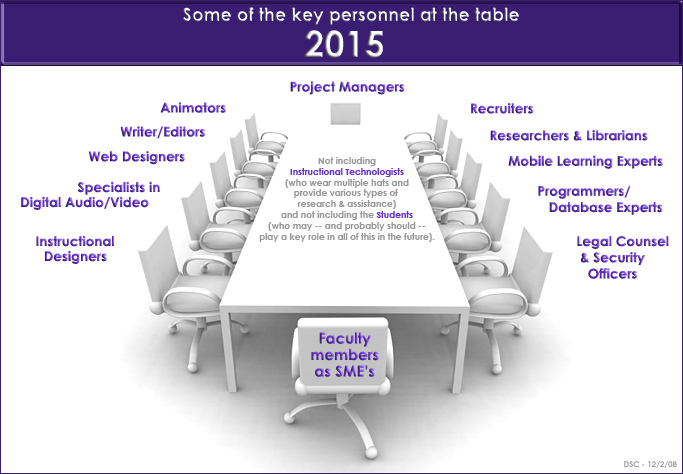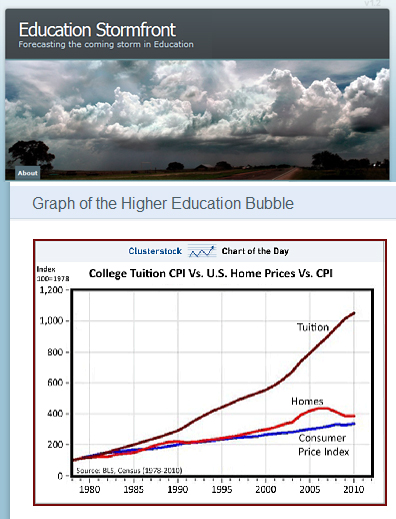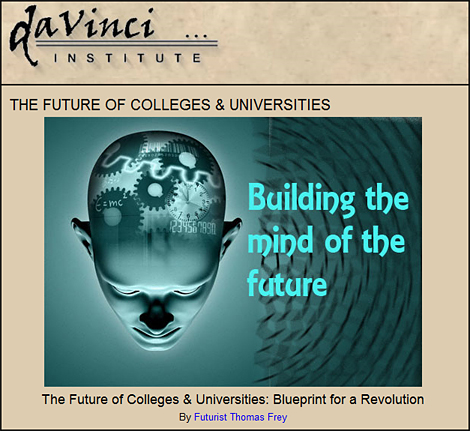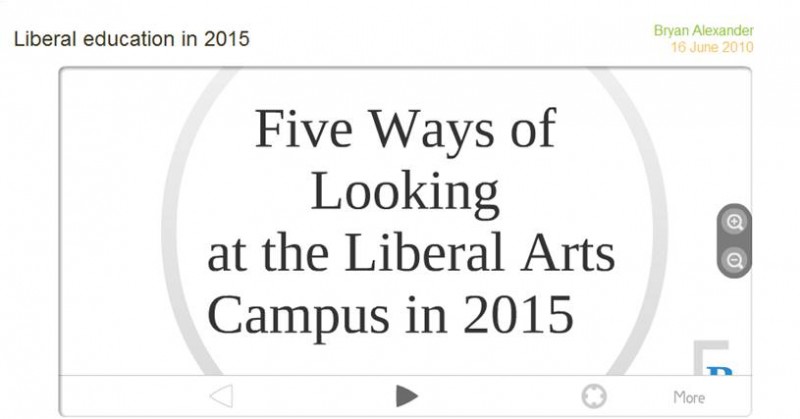Glenn Harlan Reynolds: Further thoughts on the higher education bubble — from the washingtonexaminer.com by Glenn Harlan Reynolds, a law professor at the University of Tennessee.
“Shellacking the For-Profits” — from InsideHigherEd.com by Jennifer Epstein
WASHINGTON — Senate Democrats made it clear Wednesday that their examination of for-profit higher education has only just begun, and that they plan to pursue legislation aimed at reining what they see as the sector’s dishonest — if not fraudulent — practices.
At a hearing on the “student recruitment experience” at for-profit colleges that began Wednesday morning and carried on through the mid-afternoon, Sen. Tom Harkin (D-Iowa), chairman of the Health, Education, Labor and Pensions Committee, outlined plans to hold more hearings on the sector, to collect broad sets of information from for-profit colleges, and to begin drafting legislation aimed at cleaning up the sector.
“Education is too important for the future of this country,” he said. “Facing the budget problems we have in the next 10 years, we just can’t permit more and more of the taxpayers’ dollars that are supposed to go for education and quality education … to be going to pay shareholders or private investors.”
From DSC:
Coming from a corporate background, I’m thinking this morning in terms of market share. If those of us in the more “traditional” institutions of higher ed were smart, we’d take this as major opportunity. The for-profits made a big mistake here — sacrificing integrity and reputation for building up their revenues; very bad move. I believe it was Benjamin Franklin who once said something like, “Glass, china, and reputation, are easily crack’d, and never well mended.”
The for-profits here seemed to have taken their cues from the casino we call Wall Street. Yet another example of cold-heartedness. This is an opportunity for those institutions of higher ed to take the legitimate, effective items of what was/is working for the for-profits and implement them with integrity instead…for example, implementing the use of teams.
Also relevant:
Also see:
- The Higher Education Bubble: It’s About to Burst
- Chart of the day: Is College Education The Next Bubble Set To Burst?
- Glenn Reynolds: Higher education’s bubble is about to burst | Washington Examiner
“It’s a story of an industry that may sound familiar. The buyers think what they’re buying will appreciate in value, making them rich in the future. The product grows more and more elaborate, and more and more expensive, but the expense is offset by cheap credit provided by sellers eager to encourage buyers to buy.
Buyers see that everyone else is taking on mounds of debt, and so are more comfortable when they do so themselves; besides, for a generation, the value of what they’re buying has gone up steadily. What could go wrong? Everything continues smoothly until, at some point, it doesn’t.
Yes, this sounds like the housing bubble, but I’m afraid it’s also sounding a lot like a still-inflating higher education bubble. And despite (or because of) the fact that my day job involves higher education, I think it’s better for us to face up to what’s going on before the bubble bursts messily.”
McGraw-Hill Education: Product Manager – Student Innovations
Profession: Marketing -> Product Management
The McGraw-Hill Companies is driving the education, financial services, and business information markets through leading brands such as McGraw-Hill Education, Standard & Poor’s and J. D. Power and Associates. McGraw-Hill Education addresses virtually every aspect of the education market from pre-K through professional learning.
Using traditional materials, online learning and multimedia tools, we empower the growth of teachers, professionals and students of all ages. Our technical innovations are changing the way people learn, with e-books, online tutoring, customized course Web sites and subscription services. We are also a leading provider of reference and trade publishing for the medical, business, engineering and other professions. McGraw-Hill is investing in and committed to innovation, both in its business and in shaping the future of higher education.
The Learning Ecosystems Group is the team responsible for defining that vision of the future. We are building businesses that meet the needs of higher education students – products that can be directly marketed to students and to institutions, including our current GradeGuru product as well as the significant digital platform products in our short-term pipeline. The Learning Ecosystems Group is thus offering a unique and exciting opportunity for an experienced Product Manager in our New York City offices. The ultimate aim for this Product Manager is loosely to develop, deliver and monetize products/ services that will give students the tools they need to meet their course goals, as well as to drive the research, ideation and vision for new product(s)/ service(s) that are responsive to the needs of students.
Essential Accountabilities
- Manage and conduct research to understand and synthesize student tasks, presenting and sharing the findings across the MHHE business.
- Analyze market and product opportunities in the context of primary, secondary and competitive research. Continually collect, distill, and disseminate foundational research to inform product development.
- Build prototypes and/ or wireframes to define functional requirements that can be market tested to determine and prove market potential.
- Develop and thoroughly document/ articulate the vision and business case for the product(s) to gain buy-in from stakeholders across the organization. Clearly communicate a cohesive strategy and product road map.
- Drive product implementation in collaboration with vendors and business analysis and design partners. Build out the detailed functional requirements and design of the initial product/ service based on research, wire-framing, prototyping, user testing, experimentation and iteration.
- Drive the growth of the product/ service(s) over time, both in terms of the product road map/ functionally and customer base and revenues.
- Build out the monetization plans and business model elements to drive the product to ultimate profitability, setting aggressive targets.
- Ensure all resources are in place across the product and working in concert to achieve the ultimate success of the business, including analytical, design, technical and sales/ marketing resources as appropriate. Articulated accountabilities for team members for successful execution and delivery of the overall business objectives and targets.
- Work in collaboration with the existing MHHE sales, marketing and strategy team for maximum productivity, efficiency and product success as well as manage customer needs in collaboration with the existing MHHE customer service group
- Resource and lead a marketing team to drive rapid growth through a sound marketing and PR plan based on our understanding of our market segmentation motivations, our stakeholder interests, social media marketing tools, the power of PR and a grassroots, viral approach.
- Bachelor’s degree; Master’s degree preferred
- 8-12 years experience in related field, at least 2-3 as a lead product manager
- Proven ability to deliver…
From Spring 2010
…
From DSC:
If you are even remotely connected to higher education, then you *need* to read this one!
Most certainly, not everything that Thomas Frey says will take place…but I’ll bet you he’s right on a number of accounts. Whether he’s right or not, the potential scenarios he brings up ought to give us pause to reflect on ways to respond to these situations…on ways to spot and take advantage of the various opportunities that arise (which will only happen to those organizations who are alert and looking for them).
***Check out this announcement:***
Straighterline and Assumption College Continuing and Career Education partner to offer adult learners an exceptionally-flexible and affordable way to earn a business degree
Alexandria, VA – StraighterLine (http://www.straighterline[dot]com) announced today that the Assumption College Continuing and Career Education (www.assumption.edu/cce), a leading provider of quality online education, has joined StraighterLine’s expanding partner college network. Assumption College — a not-for-profit New England College — has provided education and student enrichment since 1904. StraighterLine partner colleges are all regionally accredited institutions that award post-secondary credit upon transfer for successfully completing its online college courses. Assumption College is StraighterLine’s first Massachusetts partner college and its first Catholic College.
Through this partnership, students who successfully complete StraighterLine distance learning courses may transfer their courses for full credit when they enroll with Assumption College Continuing and Career Education, Online Business program. Students can use these transfer credits towards the completion of their associate and bachelors degrees.
Students can take freshman and introductory-level classes from StraighterLine and save thousands of dollars on a four-year college degree. With StraighterLine, students pay only $99 per month plus $39 per course started and can move as quickly or slowly through the material as they like.
StraighterLine courses have been evaluated and recommended by the American Council on Education (ACE)’s Credit Recommendation Service and have met or exceeded the Distance Education and Training Council’s standards for online course quality.
From DSC:
Is this “The Forthcoming Walmart of Education?” Quite possibly at maximum, but at minimum, a sign of what’s coming down the pike.
And by the way, when I say “Walmart of Education”, I am not speaking derogatively. I mean no disrespect at all. In fact, quite the opposite. The disruptions taking place now — and continuing in the near future — will create opportunities to learn better and more efficiently, but at far less expensive prices.
Congrats to StraighterLine on their pursuit of making a tangible, concrete impact on reducing the cost of getting a degree! For the rest of us, we had better take note and develop a range of options, pricing, etc. We need to respond to the disruption being caused by the Internet — and take advantage of it, not shy away from it or stick our heads in the sand and pretend that it’s not happening. We don’t want to go the way of the Blockbusters of the world who minimize/discard the impact that technology brings to the table.
For colleges in some states, financial relief is far off — from The Chronicle by Goldie Blumenstyk
Even when the economy begins to recover and employment picks up, public colleges shouldn’t expect much immediate relief from their states, warns a report this month from Moody’s Investors Service. Some states will very likely recover much more slowly than others. In more than half of the states, recovery is not projected to kick in until at least 2013, 2014, or later. And even then, the report notes, states will still face pressures for spending on public-employee pensions, health care, primary education, and other services.
A marriage made in Indiana — from InsideHigherEd.com
Just about everywhere you turn, state leaders are searching for a way to use online education to expand the reach of their public higher education systems at a time of diminished resources.
The approaches vary: In Minnesota, Gov. Tim Pawlenty has heralded a future of “iCollege,” while in Pennsylvania, the state college system envisions using distance learning to help its campuses sustain their offerings by sharing courses in underenrolled programs. California’s community college system turned to a for-profit provider, Kaplan University, to work around its budget-related enrollment restrictions. And a grand experiment to create a fully online branch of the University of Illinois, meanwhile, crashed and burned last fall.
Evaluating Part-Time Faculty — from Academic Impressions by Daniel Fusch
This fall, the US Department of Education is expected to release a report showing a further drop in the percentage of US faculty who are tenured or tenure-track (which as of 2007 had already dropped to 31%, down from 57% in 1975). This comes on the heels of a recent study published in the journal Educational Policy that showed lower persistence rates for freshmen who have many of their courses taught by adjuncts, prompting fresh debate over what the increased use of contingent faculty may mean for the quality of education.
From DSC:
I don’t mean to be critical or find fault here…but I do wonder how many resources are put into full-time faculty’s training and development in terms of helping them learn how to TEACH (vs. doing research, publishing their findings, etc.). Teaching is tough and is both a science and an art. Few can be good at everything.
Also, I think there is an emphasis on teaching at some institutions, but there may be more of an emphasis on publishing and doing research at other institutions.
For example, I went to Northwestern University in Evanston, IL. Currently, NU charges about $55,000 a year to go there. Does the student get top notch TEACHING? In many cases, I doubt it. The students may get subject matter experts (SME’s) who know their subject matter like the back of their hand or they make be taking a course from someone who has carved out a name for himself/herself in a particular discipline…but that doesn’t mean they know how to teach that material. Also, it doesn’t mean that many students will ever get to take a class from these folks, as they may be getting a grad student teaching some of their core courses…I know I did.
Also, this is all the more reason that teams of specialists will be/should be used to create and deliver content. You want the best SME’s you can get…but you need to back them up with the resources to create the best all-around product. You need the skillsets found in instructional designers, programmers, web designers, interaction designers, graphic designers, legal experts, etc. — the best that you can afford to create engaging, interactive, multimedia-based, personalized content.
You can bet that the “Forthcoming Walmart of Education” will get this right! And when they do, watch out. They will leave many institutions in their dust.

Free Online Journalism Classes Begin To Gain Ground – from Media Shift via Ray Schroeder:
The CEO of Creative Commons, Joi Ito, is currently teaching a free online journalism class through Peer 2 Peer University, an online community of “open study groups for short university-level courses.” The online class syncs with a graduate-level class Ito teaches at Keio University in Japan, and features a UStream presentation and IRC chat once a week. IRC chat? Yes, the class glues together tools like UStream and IRC, and the platform, which was built on a Drupal base, continues to evolve. P2PU’s organizers make it clear they know the tools aren’t perfect, so they’re using feedback from participants to refine things as they go.
Liberal arts campuses in 2015: five visions — Bryan Alexander












